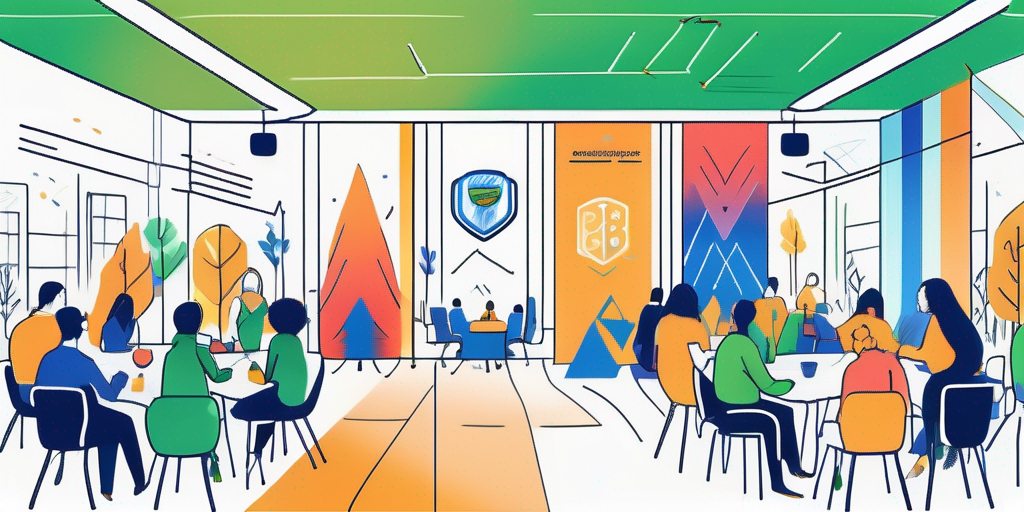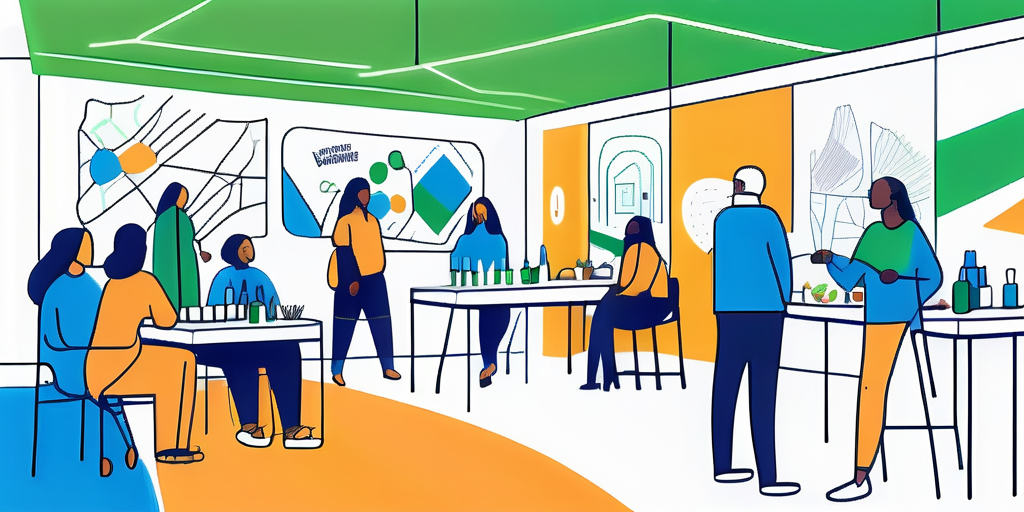
In an increasingly interconnected world, the concept of community has evolved significantly. Social memberships have emerged as a vital element in fostering connections among individuals, promoting a sense of belonging, and ultimately crafting robust community ties. This article delves deeply into the realm of social memberships, their impact, and the future they hold in community building.
Social memberships refer to formal or informal ways through which individuals join groups, clubs, or organizations that prioritize social interaction and participation. They can encompass a variety of interests, activities, and cultural or professional affiliations. This concept is broad, providing multiple entry points for those seeking connection and engagement.

At its core, a social membership is about belonging. It usually involves individuals signing up or joining a community through different means, whether by paying dues, volunteering time, or simply by showing interest. The objective remains the same: to create networks and relationships that transcend individualism and nurture communal values.
While some memberships are associated with specific activities, such as sports teams or hobby clubs, others might be more loosely defined, focusing on community service or social activism. What binds these memberships together is the shared experiences and social opportunities they provide. The sense of belonging that comes from these memberships can significantly enhance an individual's well-being, offering emotional support and a sense of purpose in an increasingly fragmented world.
Moreover, social memberships often serve as a platform for personal growth and development. Members can acquire new skills, gain insights from diverse perspectives, and even explore leadership opportunities within the group. This dynamic fosters an environment where individuals are encouraged to step outside their comfort zones, paving the way for transformative experiences that enrich their lives.
Each type of membership brings its unique flavor, catering to diverse interests and helping to weave the rich tapestry that forms a strong community fabric. For instance, clubs and societies often provide structured activities that can lead to lifelong friendships, while online communities break geographical barriers, allowing individuals to connect with like-minded people from all corners of the globe. Neighborhood associations, on the other hand, foster a sense of local pride and responsibility, encouraging residents to actively participate in the betterment of their surroundings.
In addition to these categories, social memberships can also evolve over time, adapting to the changing needs and preferences of their members. This adaptability is crucial in maintaining engagement and relevance, as organizations strive to keep their offerings fresh and appealing. As members contribute their ideas and feedback, they play a vital role in shaping the direction of the group, ensuring that it remains a vibrant and inclusive space for all participants.
Social memberships play a pivotal role in building and reinforcing community ties. They provide platforms for engagement, interaction, and mutual support. These platforms also empower individuals to take part in shaping their communities, leading to a sense of ownership and pride.
One of the most significant impacts of social memberships is the increase in community engagement. When individuals come together through shared interests or goals, they are likely to interact more both within the group and the larger community.
Such engagement can manifest through organized events, volunteer opportunities, or simply informal gatherings. By encouraging participation, social memberships not only create connections but also inspire collective action towards common objectives, enhancing the overall community spirit. For instance, a local book club may not only discuss literature but also organize community reading events, fostering literacy and a love for reading among residents. This ripple effect of engagement can lead to a more vibrant community where individuals feel invested in one another's success.
Participation in social memberships can substantially affect mental and emotional well-being. Engaging with others who share similar values and experiences can provide support, reduce feelings of isolation, and foster a sense of belonging.
Studies indicate that individuals who actively participate in social memberships report higher levels of happiness and satisfaction. This is noteworthy, as the psychological benefits may encourage further engagement, creating a positive feedback loop within the community. Additionally, the act of collaborating on projects or initiatives can enhance self-esteem and personal growth, as members discover new skills and talents while working alongside others. This shared journey not only strengthens individual identities but also weaves a richer tapestry of community life, where diverse perspectives and experiences come together to create a more inclusive environment.
Social memberships can manifest differently across various communities, influenced by demographics, cultural backgrounds, and geographical locations. Understanding these nuances is key to appreciating their role in fostering community ties.

In urban settings, social memberships often thrive due to the city's diversity and the multitude of available activities. Networking groups, cultural clubs, and community organizations play pivotal roles in bringing people together amid busy lifestyles.
Urban memberships often focus on addressing specific community needs, such as housing, public safety, or cultural representation, promoting social change while simultaneously reinforcing bonds among members.
Additionally, urban social memberships frequently leverage technology to enhance engagement and communication. Online platforms and social media groups allow members to connect, share resources, and organize events, making participation more accessible. This digital integration not only broadens the reach of these memberships but also fosters a sense of belonging among individuals who might otherwise feel isolated in the fast-paced city environment.
Conversely, rural communities face unique challenges and opportunities regarding social memberships. Often characterized by tight-knit populations, rural memberships may center around agriculture, local governance, or recreational activities.
These memberships can act as lifelines, providing vital support networks that help community members through challenges and enable them to celebrate local culture and traditions.
In rural areas, social memberships often emphasize sustainability and local resources, encouraging members to engage in cooperative farming, community gardens, and local markets. Such initiatives not only strengthen economic ties but also foster a deeper appreciation for the land and shared heritage. Furthermore, these memberships can serve as platforms for advocacy, allowing rural residents to voice their concerns regarding issues like land use, environmental conservation, and access to healthcare, thus empowering them to influence local policies and practices.
While social memberships offer numerous benefits, they are not without their challenges. Identifying and addressing these obstacles is essential for creating truly engaging community experiences.
Several challenges can hinder the formation of effective social memberships. One common issue is a lack of awareness about the existence or benefits of various memberships. Potential members may not know where to find groups aligned with their interests.
Additionally, time constraints and differing priorities can impede participation. In both urban and rural settings, individuals often juggle multiple responsibilities, making it tough to commit to social activities or participate consistently. This juggling act can lead to a sense of isolation, as people may feel disconnected from their communities, even if they are physically present. The challenge, therefore, lies not only in attracting members but also in fostering a sense of belonging that encourages ongoing engagement.
To overcome these challenges, targeted strategies are needed. Promotions through local media, social networks, and community events can raise awareness about available memberships. Making participation convenient and inclusive will also encourage more people to join. Utilizing digital platforms to provide virtual options for meetings and activities can help bridge the gap for those unable to attend in person due to time constraints or mobility issues.
Offering flexible meeting times, diverse activities, and creating welcoming environments can significantly increase engagement. Building strong relationships within the membership and ensuring that each member feels valued and heard will cultivate loyalty and sustain participation. Additionally, incorporating feedback mechanisms can empower members to voice their ideas and preferences, leading to a more tailored experience that resonates with the group's collective interests. This approach not only enhances the sense of community but also fosters a culture of collaboration, where members actively contribute to the evolution of the membership experience.
Looking ahead, social memberships hold promising potential for community building. As society continues to evolve, so too will the ways in which memberships are formed and utilized.

Technology plays an influential role in shaping the future of social memberships. With the advent of social media, online platforms, and virtual meeting tools, individuals can connect with like-minded people regardless of geographic boundaries.
This technological integration enhances accessibility, allowing diverse groups to come together and participate in community discussions and events without requiring physical presence. As technology advances, we may see more innovative approaches to membership that promote inclusivity and engagement. For instance, the rise of augmented reality (AR) and virtual reality (VR) could revolutionize how members interact, creating immersive experiences that mimic real-world gatherings. Imagine attending a virtual festival or workshop where you can engage with others in a shared digital space, fostering connections that transcend traditional limitations.
Looking towards the future, it is likely that social memberships will continue to evolve to meet the changing needs of communities. We may witness more hybrid models that combine in-person and virtual interactions, allowing greater flexibility and possibilities for engagement.
Moreover, as communities become increasingly aware of social issues, the role of memberships in promoting activism, awareness, and social justice will likely grow stronger, reinforcing the vital connections that help build resilient and supportive communities. This shift may lead to the emergence of specialized memberships focused on advocacy, where members can collaborate on projects that address local and global challenges. Such initiatives could empower individuals to take meaningful action, transforming passive membership into active participation that drives change and fosters a sense of shared responsibility.
Additionally, the integration of data analytics in social memberships could provide insights into member preferences and behaviors, allowing organizations to tailor their offerings more effectively. By understanding what resonates with their members, communities can create more engaging content, host relevant events, and foster deeper connections among participants. This data-driven approach could ultimately enhance the overall experience of social memberships, making them not just a means of connection but a catalyst for personal and collective growth.